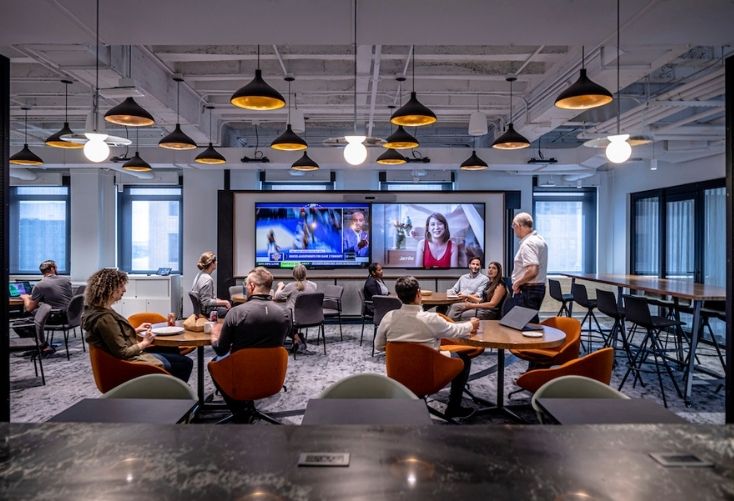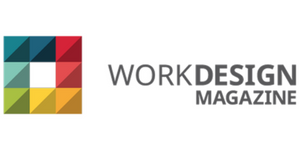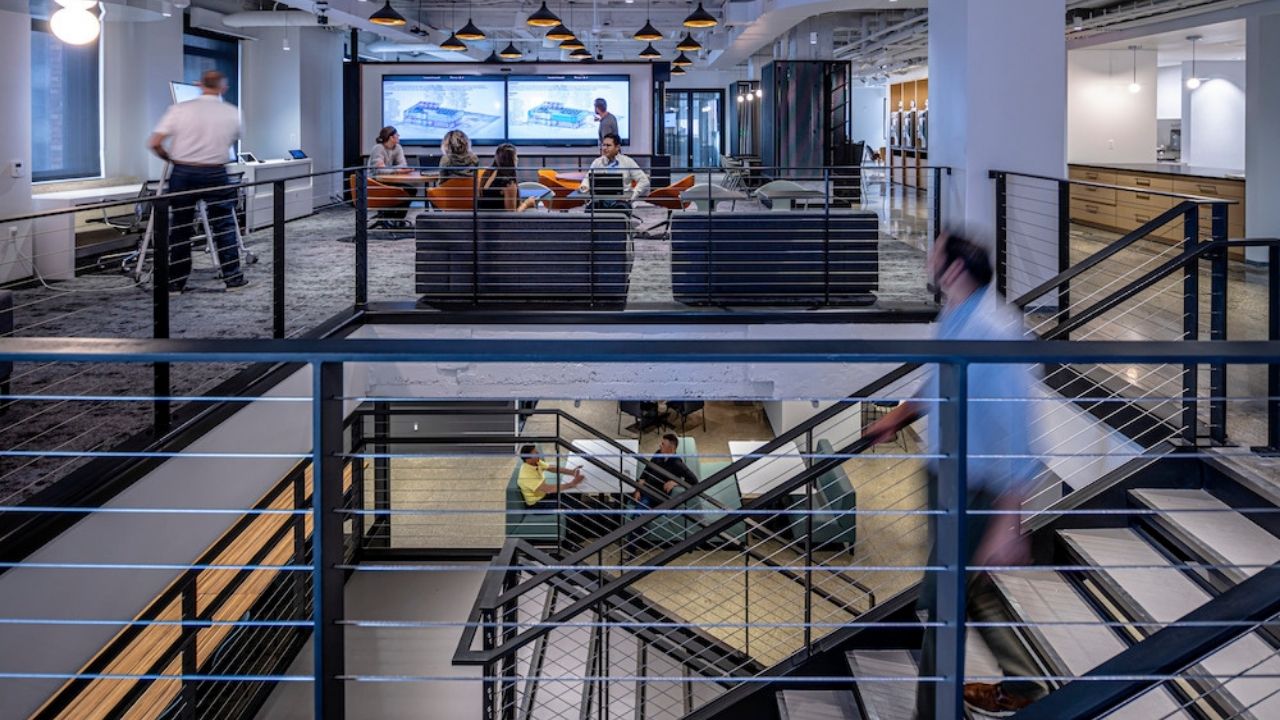- There is a fundamental piece missing from return-to-work conversations: How are we preparing individuals and organizations as a whole for yet another change?
- Over the past (almost) 2 years, workers have formed new behaviors outside of the office setting, including work patterns, processes, and schedules that encompass days, weeks and, perhaps most importantly, mindsets.
- As companies continue to assess when, how and why they want employees to return to the office, they are also presented with an amazing opportunity to create a culture that is able to continue and evolve time and time again.
This article was written by Alexis Kim and was originally published on Work Desing Magazine.
Many people are familiar with the story “Who moved my cheese?” by Dr. Spencer Johnson and the lessons of dealing with change in business and in life. In March of 2020, not only did the cheese move abruptly for most of the world, but knowledge workers experienced arguably the biggest disruption to their work lives. Workers across the globe packed their belongings to work remotely essentially overnight. We accepted this change because there wasn’t much choice. We managed the change and adapted…for better or worse.
Fast forward to present day, as organizations and leaders are still contemplating a return to the office. Some are adopting different degrees of hybrid work, while others are returning to a similar version of what they left before the pandemic. Then there is the segment of the population that is adopting remote work and downsizing or eliminating real estate holdings entirely. What is missing from the preparation and discussion is fundamental to this transition’s success: How are we preparing individuals and organizations as a whole for yet another change?
According to the Journal of Social Psychology, it takes 18 to 254 days for a person to form a new habit and 66 days for a new behavior to become automatic, all depending on individual. Our pandemic habits have formed across nearly 600 days and counting. These behaviors include work patterns, processes, and schedules that encompass days, weeks and, perhaps most importantly, mindsets. And although the workforce experienced this massive shift relatively at the same time, the habits that were adopted were formed at an individual level, as the office—with its relationships, norms, culture—was removed from the equation. This is precisely the reason why the shift that companies across industries is about to make is much more complex than any other workplace-centered change management program of the past.
Another key component to effective change is the acknowledgement that individuals need to be in the new operating mode long enough to see the benefits. Organizations cannot ignore the fact that remote work ushered in various benefits to the employee, from financial and time savings gained by not commuting to additional flexibility, better work-life balance, and the ability to choose how and where to work effectively. Asking employees to forgo these benefits after this length of time will be difficult and requires a robust change program. As Americans continue to break resignation records, vis-à-vis the Great Resignation, it is more imperative than ever for companies to devise thoughtful programs to support the next evolution of work.
Preparing for change
Developed nearly two decades ago, the Prosci ADKAR change management model suggests that there are five outcomes that an individual needs to achieve for a change to be successful: Awareness, Desire, Knowledge, Ability and Reinforcement.
Within this model, awareness of the reason for change is a critical first step, but it is often overlooked. COVID-19 was a reason for massive change that no one could dispute. But now, as many gear up to return to the office, what is the reason? Defining “the why” of the change will help the organization form the strategy and create a greater awareness at an individual level.

Regardless of the change being implemented, it is important to keep in mind that each organization’s reasons will vary and be unique. As such, drivers related to the effort must balance the organization’s business case as well as an individual’s desire and needs. Equally critical, if a change is to be effective the organization must be honest and transparent about its drivers and make meaningful correlations to the organization and its people.
For instance, when SmithGroup’s Detroit office adopted a free-address workplace model prior to the pandemic, over 300 staff members went through a year-long change management program. At the onset, the team crafted the drivers and reasons for the physical transformation and studied how it would impact the way employees work. It was a big change. The leadership understood that while physical change may be an easier transition, working to adjust mindset and create new behaviors in order to effectively adopt the new model would prove more difficult. The process began with explaining “the why” of the strategy. Sharing the primary drivers for agility created staff awareness of the greater impact beyond the physical change.
With an understanding of the drivers as a first step, companies need to align their future of work plan with a robust change program. Determining the approach and creating a change program along with it is a complex undertaking that should include leadership, HR, a solutions/project team as well as a designated change team. After awareness, the team begins to work on establishing buy-in or creating the desire to change. Change itself is not inherently valuable. The value comes as the changes are adopted and used, in this case, by one individual at a time.
Individuals will inevitably ask “what’s in it for me?” The answer isn’t the overarching drivers alone but what they mean at an individual level. This “me and we” discussion will offer greater understanding and acceptance of change that benefits both, beyond the why. This connection is critical – it is a both/and scenario, not either/or.
Enabling and Reinforcing change for the better
We all know the famous quote, “change is constant,” and yet, we often fail to recognize how that change can occur and be successful. This is where sharing aspects of how things will change through communication, training, and scenarios will help with understanding. There will be practical and procedural learnings that will need to be created to help support the transition while working on the mindset and behavior, which goes hand-in-hand. The fear of the unknown regarding “how” and “what” can often be the biggest roadblock to adoption. Once the desire is created, equipping people with knowhow is crucial. This can encompass a variety of aspects depending on the complexity of change, remote/hybrid/in-person, new policies or protocols, workflow and process, tools and resources available, and managing people and teams. The range of components will be wide and complex, and not all aspects will be solidified. The team’s job is also to communicate what is still in progress, so expectations and fear of the unknown is managed appropriately.

As SmithGroup adopted free-address workplace models in phases, one of the biggest roadblocks was people’s perception of what that environment would mean to them. For instance, some individuals perceived free address as a crammed benching concept, fearful of being reduced to a three-foot desk space, while others thought they would be forced to move around the office all day carrying all of their belongings. Without understanding the change at the tactical level, the resistance became an obstacle in many early sessions. However, simple Q&A sessions and “day in the life” activities helped individuals and teams gain knowledge, diffuse fear, and be more open minded to change.
Once a good level of understanding at the tactical level is achieved, the program then focuses on demonstrating skills and behaviors through change champions. The key is to begin to put different elements in practice so that new habits begin to take shape. This can be done in a variety of ways from transition phasing or pilot projects with a test and learn approach. In such cases, change champions help by sharing their experiences to their teams and colleagues. One could ascertain that phasing or piloting could also greatly benefit organizations adopting hybrid/remote work to a greater degree, as that change can be very complex and multi-faceted.
Creating an agile culture that can continue to evolve
Evolution is defined as a gradual directional change, especially one leading to a more advanced or complex form. Change is defined as the process of becoming different, singularly. Once a change program is set in motion, an organization is in a much better position to be agile and evolve as new disruptions occur, but only if reinforcement to change continues. As companies continue to assess when, how and why they want employees to return to the office, they are also presented with an amazing opportunity to create a culture that is able to continue and evolve time and time again.
So, while SmithGroup’s Detroit office only recently completed its extensive shift to a free-address workplace, as you may imagine, the group has to adapt and change again. With a mindset of test, learn and apply, leadership is now exploring how different teams can come in and use the office in a variety of ways while remaining flexible to the unique needs of individuals. This entails a new understanding of the use of space for intentional gathering for teams as well as focus work, testing new concepts, learning, applying, continuing to move forward, and so on. This continuation of change has been made possible and was successfully implemented because of the change program the office went through pre-pandemic. Today, employees are better prepared as more changes come because the office’s leadership team had already begun the journey of creating an agile culture.
Helping people succeed
According to Prosci research, there is a six-time (6x) increase in the likelihood of meeting objectives when a robust change management is applied to any given initiative or project. On the other hand, there is an 85% chance of not hitting the program objectives with poor or no change management—a high risk that shouldn’t be dismissed. Given that the success of an organization relies so heavily on its people, it is imperative that companies spend the necessary time and effort to invest in a program that helps individuals adopt change, again and again.
Even if your organization is returning back to the familiar landscape of its pre-pandemic office, there is still room for improvement. Take this opportunity to examine lessons learned, fold in the positive aspects and new ways of work that were adopted during the pandemic into the office and fundamentally improve your ability to adapt.
Then, before the cheese is moved again, ask yourself, how prepared is your organization for the next change?


 Dr. Gleb Tsipursky – The Office Whisperer
Dr. Gleb Tsipursky – The Office Whisperer Nirit Cohen – WorkFutures
Nirit Cohen – WorkFutures Angela Howard – Culture Expert
Angela Howard – Culture Expert Drew Jones – Design & Innovation
Drew Jones – Design & Innovation Jonathan Price – CRE & Flex Expert
Jonathan Price – CRE & Flex Expert














